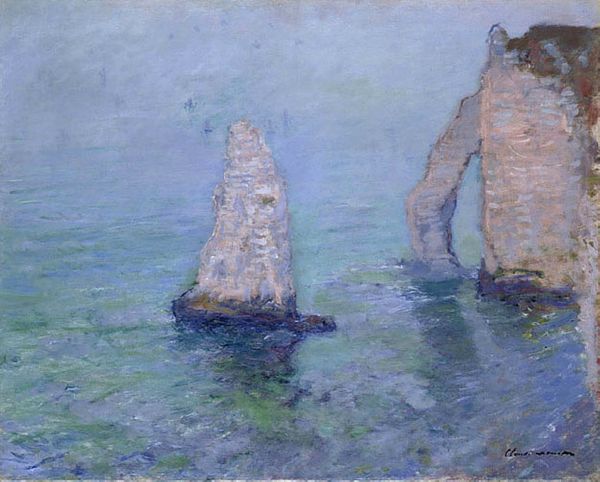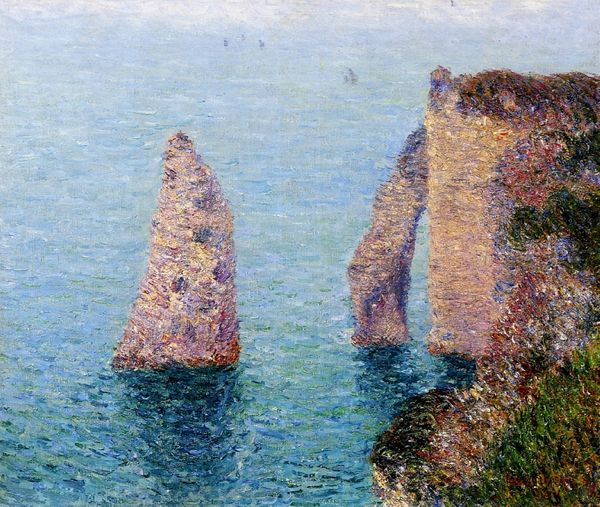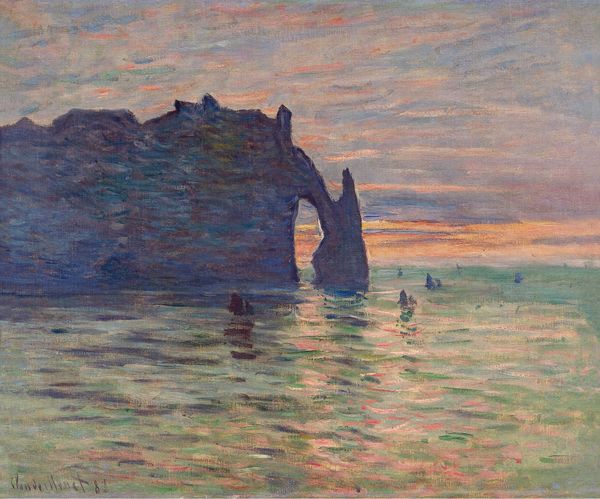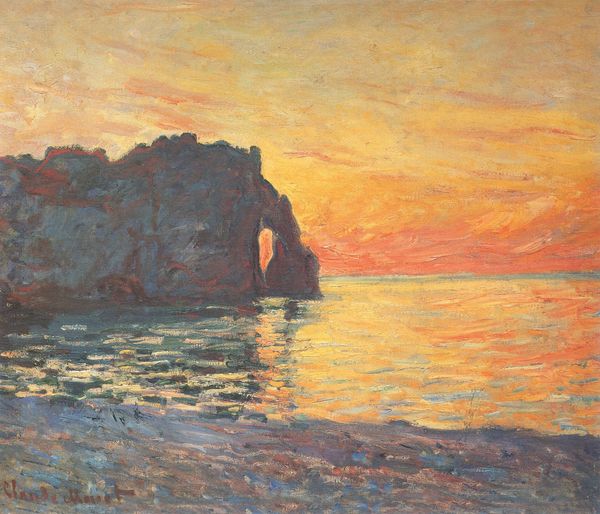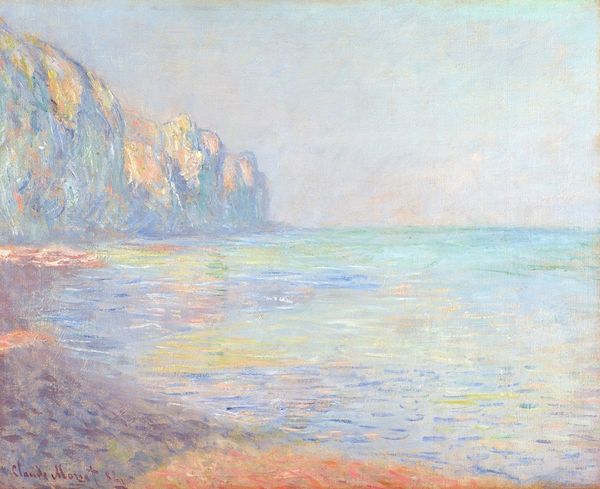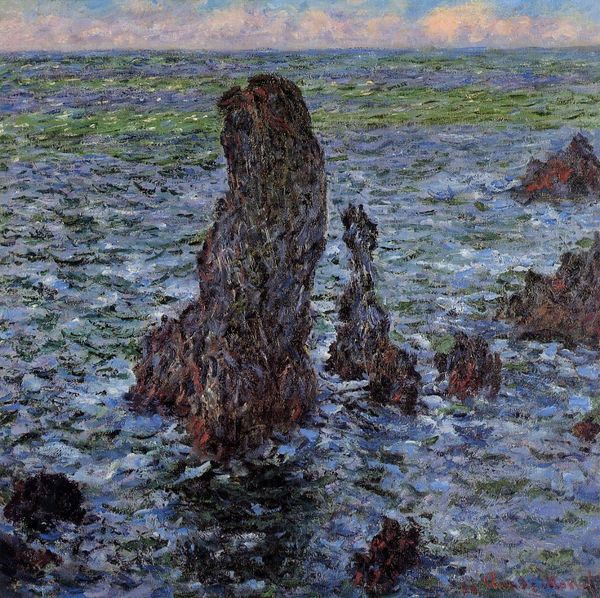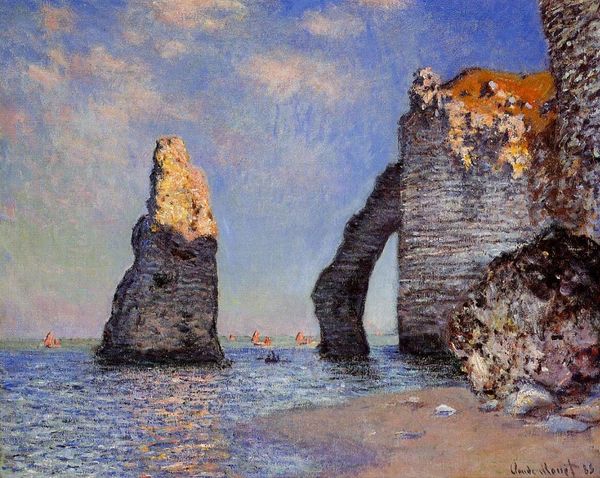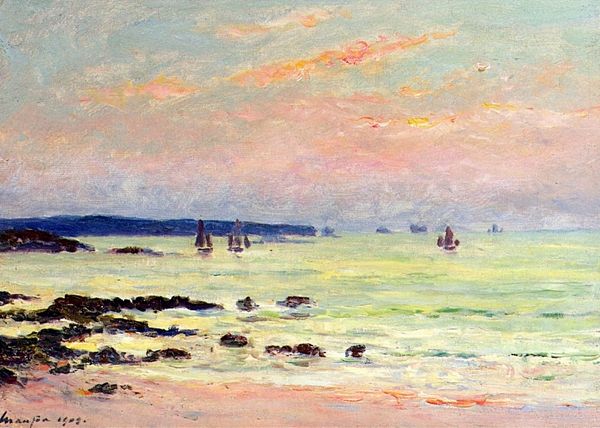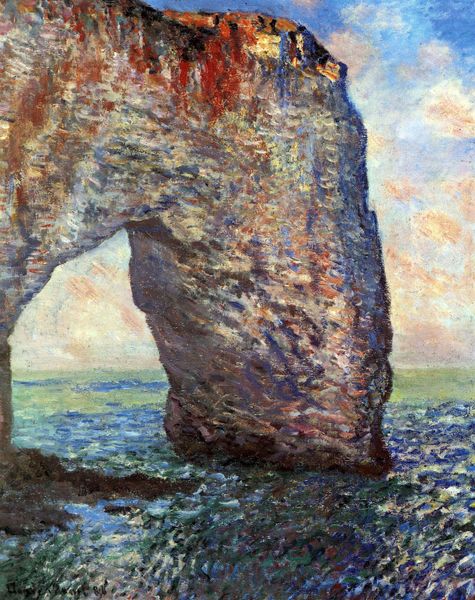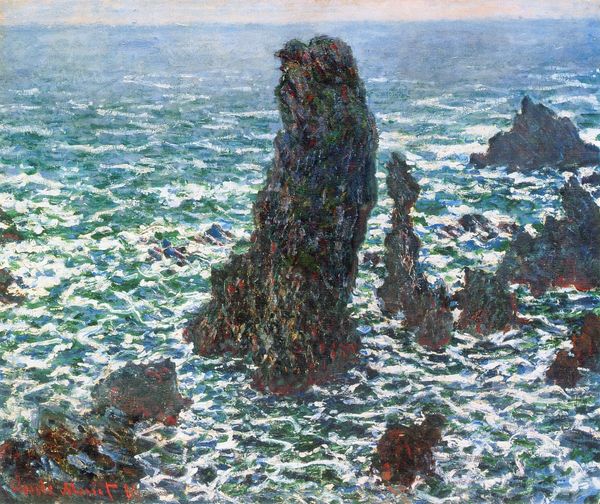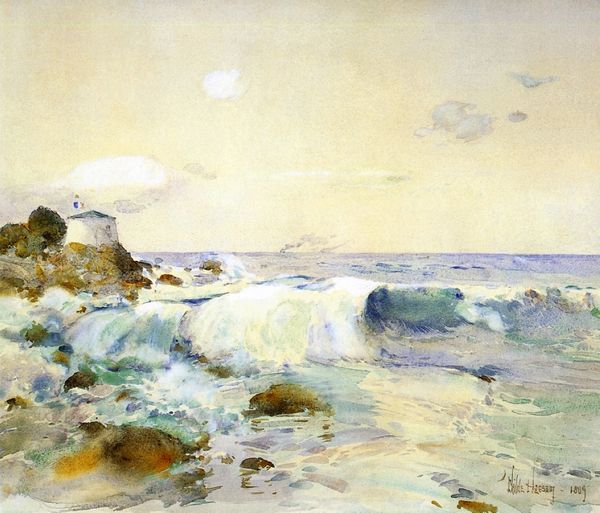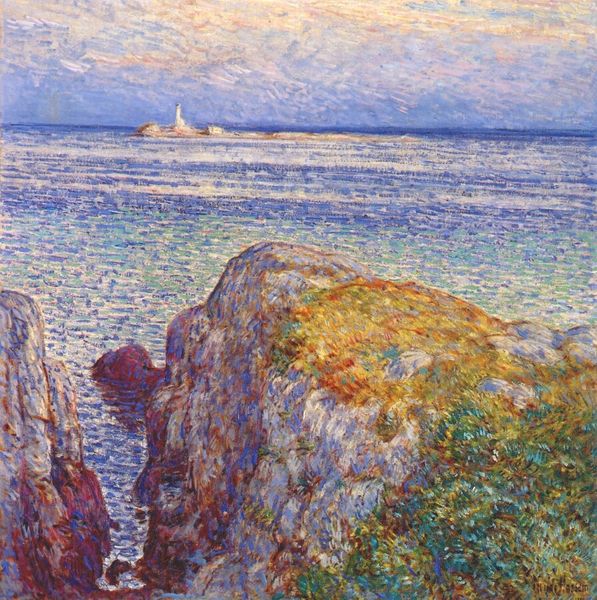
plein-air, oil-paint
#
cliff
#
impressionism
#
plein-air
#
oil-paint
#
landscape
#
impressionist landscape
#
oil painting
#
rock
#
seascape
#
water
#
watercolor
#
sea
Copyright: Public domain
Claude Monet created "The Needle of Etretat, Low Tide" using oil paints on canvas. These are traditional materials, but they speak to the industrialization of art supply. Before the mid-19th century, artists had to grind their own pigments. Monet and his peers benefitted from commercially produced paints, which came in tubes. Consider how Monet builds up texture using many small strokes, a mosaic of color that gives the cliffs and water a vibrant energy. This impasto technique allows light to play across the surface, creating a sense of movement and immediacy. His painting style reflects a shift towards capturing fleeting moments and subjective experiences. Monet's technique required countless hours of work. As industrialization progressed, artists were confronted with changing ideas about value and labor. The work presents a tension between handcrafted skill and mass production. The labor of the artist is visible. Paying attention to the material and the making of this painting enriches our understanding of its historical and cultural significance, blurring the boundaries between art and craft.
Comments
No comments
Be the first to comment and join the conversation on the ultimate creative platform.
